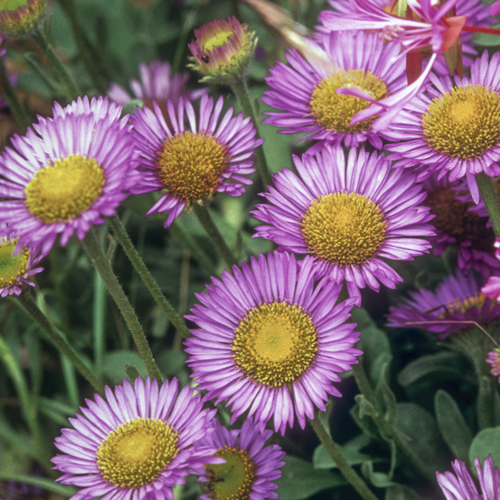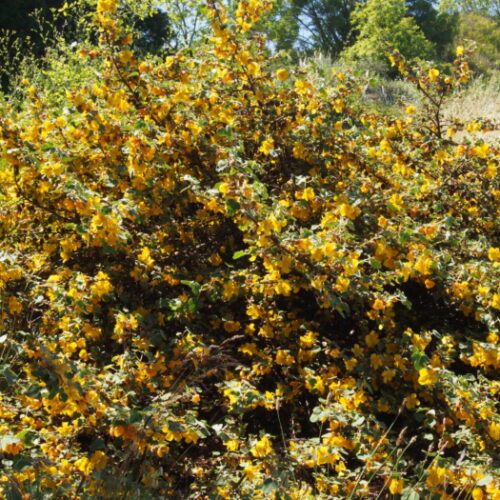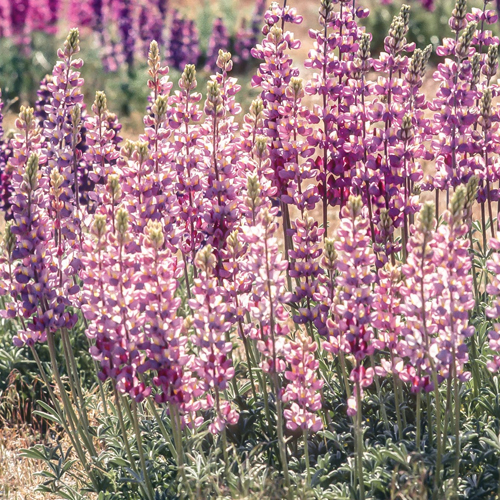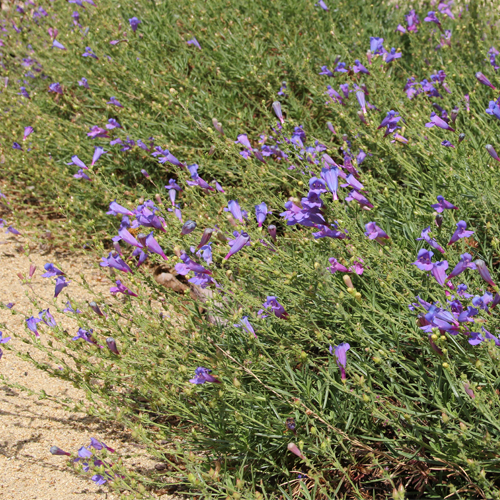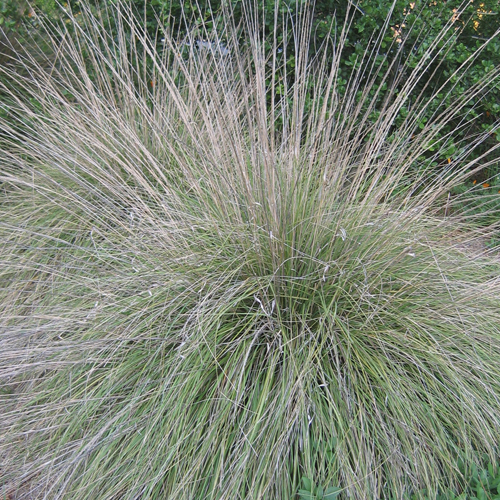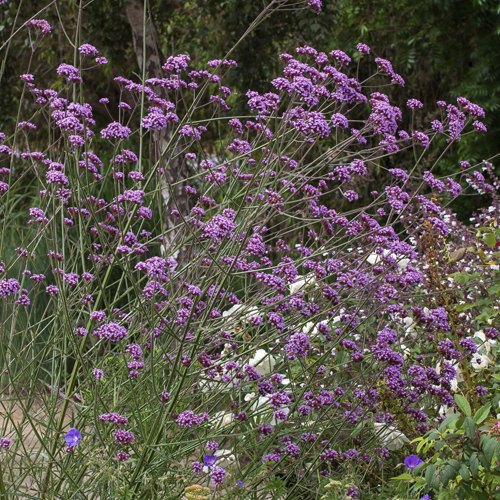Habitat Havens
BACK TO FULL TOUR
Garden Features
Drought Tolerant
Edible Garden
California Natives
Deer Resistant
Drip Irrigation
Pesticide Free
Rainwater Harvesting System
Reclaimed/Recycled Materials
Smart Irrigation Controller
Lawn-Free Landscaping
Permeable Surfaces
Wildlife Habitat
Educational Signage
Partner: Refugia Marin
Embark on a journey through two adjacent, captivating gardens: the thriving Native Habitat Garden by nonprofit Refugia Marin, and the educational Hawks’ Garden at Neil Cummins Elementary School. Visit these two remarkable outdoor spaces to immerse yourself in nature while learning about the wonders of local flora and fauna.
Native Habitat Garden –
The Native Habitat Garden nestled beside the lagoon in Town Park Corte Madera, is a sanctuary for wildlife and a model for sustainable native planting. Established by Refugia Marin in 2021, this garden was designed with sustainability in mind. It boasts drought-tolerant native plants that offer year-round sustenance and shelter for birds and insects. Plants are helpfully labeled, so you can identify and choose your favorites to enjoy in your own yard. This Native Habitat Garden came to life through Refugia Marin’s collaboration with several local partners, along with Corte Madera Town and the Larkspur-Corte Madera School District. Designed by Dan Dufficy of CNL Native Plant Nursery, the garden reflects a joint commitment to organic and native planting methods.
Educational Elementary School Garden and Campus –
Just beyond the fence lies the Hawks’ Garden, a vibrant outdoor classroom spanning 3,000 square feet. Established by the school’s PTO in 2016, together with the 2nd grade teacher, it hosts galvanized metal planters, wooden planters, and in-ground beds bursting with edible crops and pollinator-friendly plants, such as borage, nasturtiums. Sunflowers are interspersed with the food crops. Fruit trees, including fig, lemon, lime, pomegranate, and apple, can also be found within the garden. Featuring a Monarch Waystation, this garden also supports the Western Monarch butterfly with native milkweed for egg-laying and nectar plants for feeding. Educational panels highlight the importance of conservation efforts towards this majestic insect. Students learn about food crops and ecosystems, and benefit from science projects folded into their curriculum on campus, along with several fun and educational events throughout the year. This is an ADA compliant garden.
Special Events
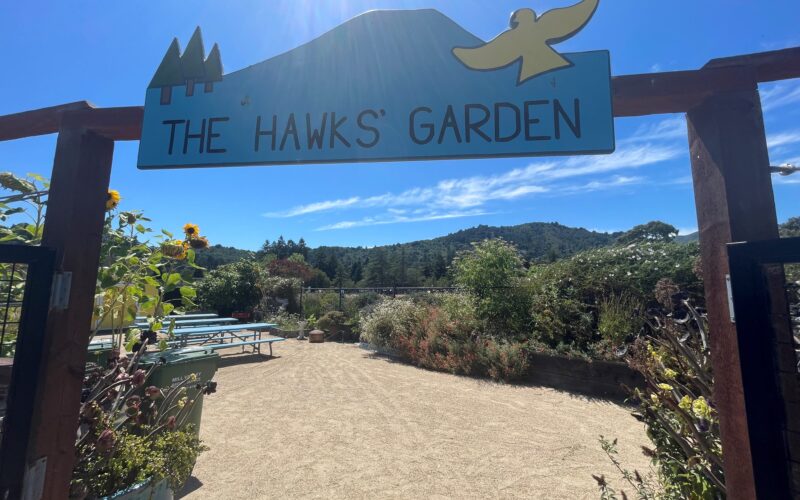
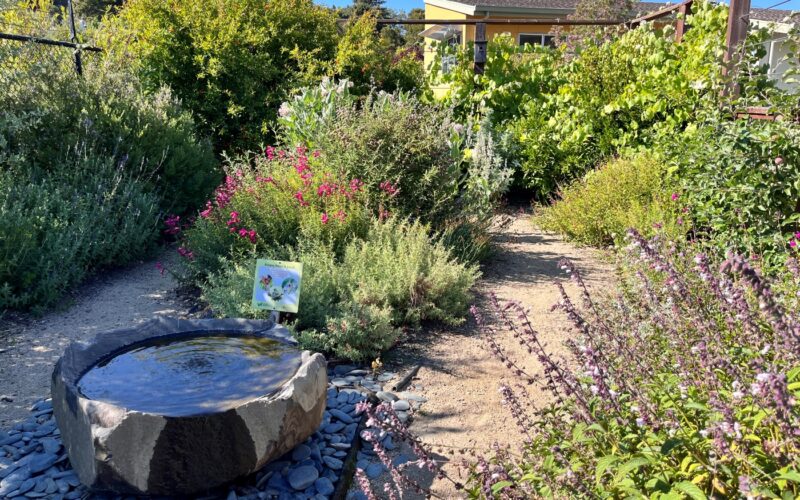

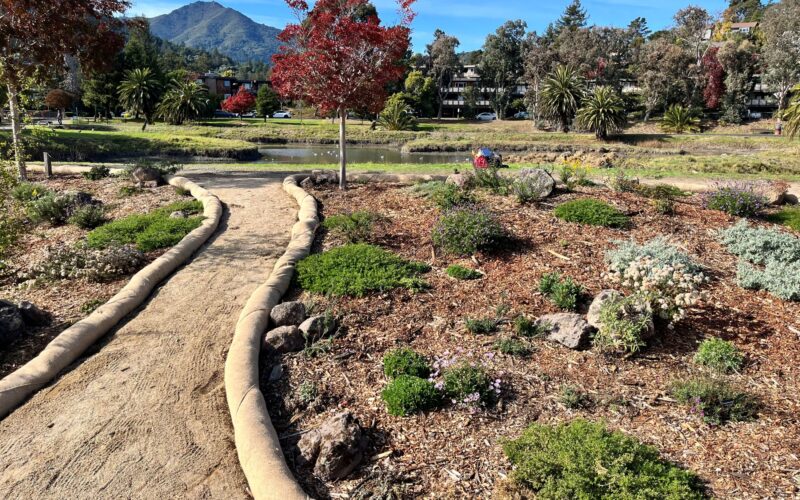
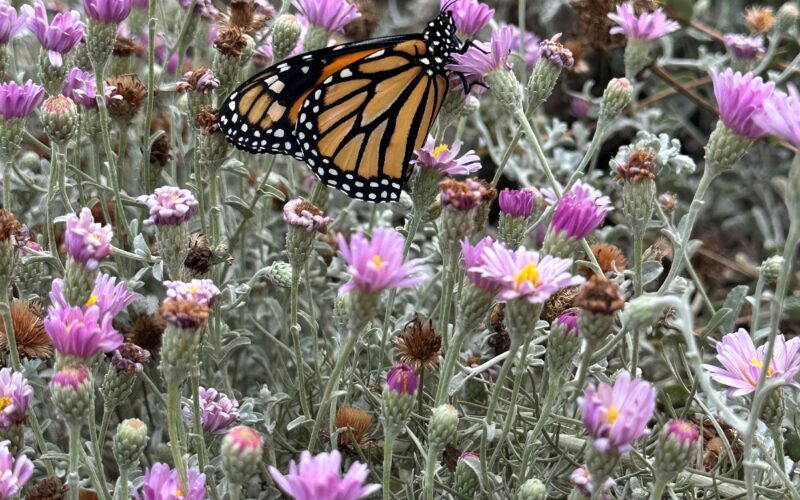

Plants in this Garden
Favorite Plants
California Poppy
Eschscholzia californica
California Lilac
Ceanothus
Narrow Leaf Milkweed
Asclepias fascicularis
Hummingbird Sage
Salvia spathacea
Coastal Live Oak
Quercus agrifolia var. oxyadenia
Favorite Garden Suppliers
CNL Nursery
254 Shoreline Highway Mill Valley
Green Jeans Nursery
690 Redwood Highway Mill Valley
The Watershed Nursery
601a Canal Boulevard Richmond
